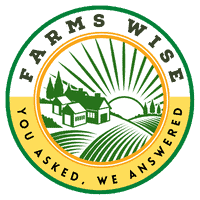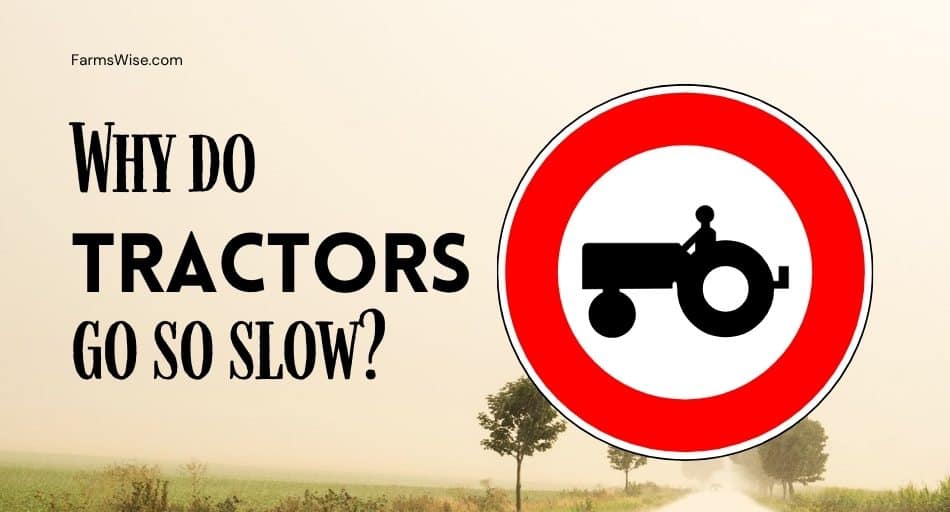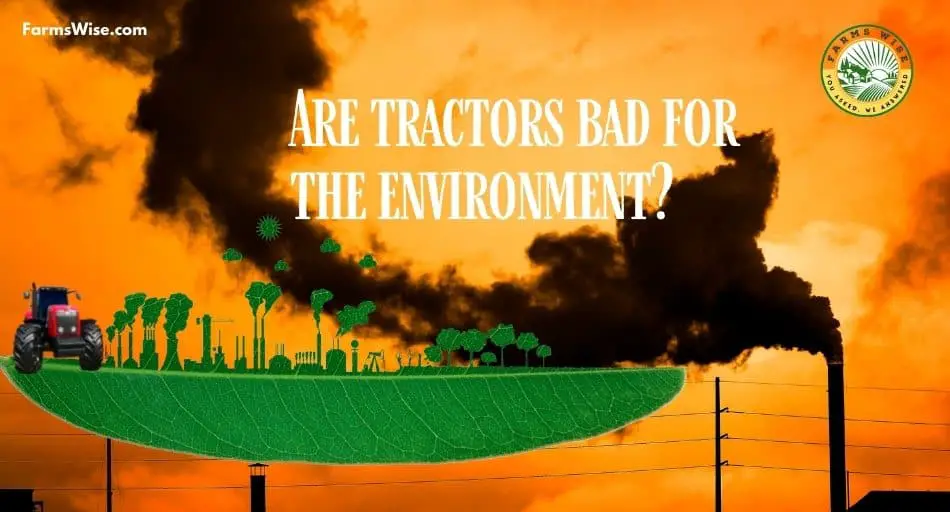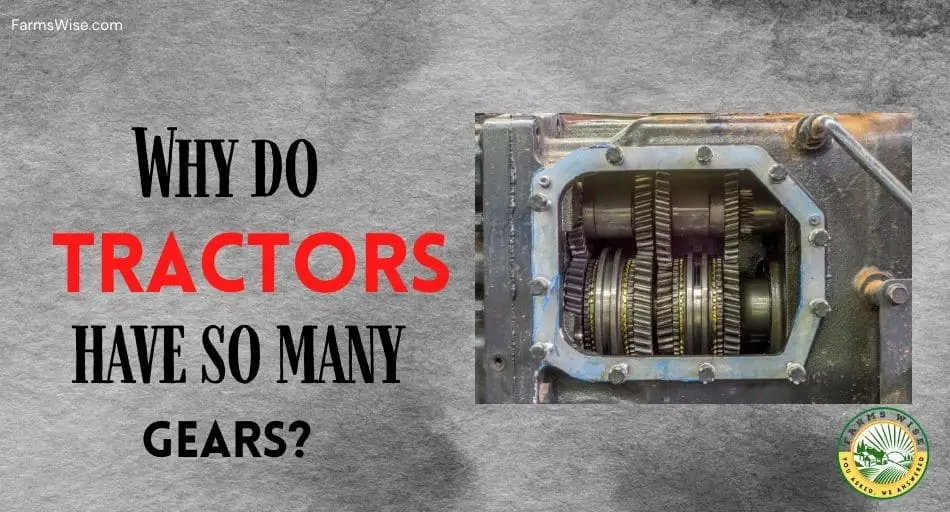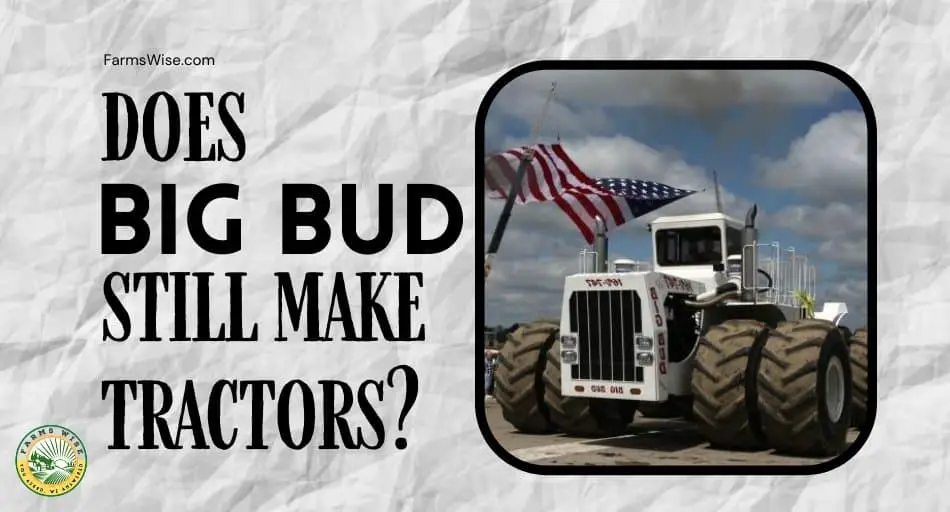Tractors are massive vehicles you usually see every spring or fall on the road next to other farm machinery that you probably always wondered what they were.
At the moment when you are stuck on the road behind them, you just know that the next 10 minutes will be the longest in your life. Your chances to overtake them before they turn somewhere to the field are equal to zero.
It’s legal to drive farm machinery (tractors) on public roads, and it’s often the only way farmers can get from field to field, but why are they so slow, at least the ones you see on the road in front of you?
Why do tractors go so slow?
Tractors go slow because they have high torque where the increase of engine rotations makes transport of very heavy loads easier and more efficient, which is the main purpose of this vehicle. It gives them enough power to drive, especially when rolling up the hill or on the field, requiring them to go slow.
Pushing and pulling a variety of goods as well as working in the field and on the farm requires low speed, which in many cases is 25 mph (40 km/h).
How fast can tractors actually go?
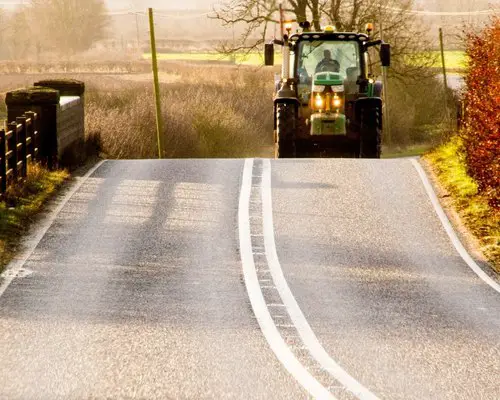
Tractors in the United States were designed to travel at a top speed of approximately 20 mph (30 km/h) in not so long history. Then European tractors increased that speed up to 25 mph (40 km/h).
Tractors introduced in 1994 could travel to 32 mph (50km/h) due to higher ratio gearing and their front axles suspension. After that, everything seems like ancient history. Tractors are classified as slow-moving vehicles but are they still really so slow?
The majority of tractors still travel at up to 25 mph. However, some tractors built to higher specifications are permitted to be driven at up to 40 mph (around 65 km/h), and in reality, they can go even faster than that.
Currently, many states are struggling with these higher-speed tractors and how to distinguish them, and if the current regulations should be changed.
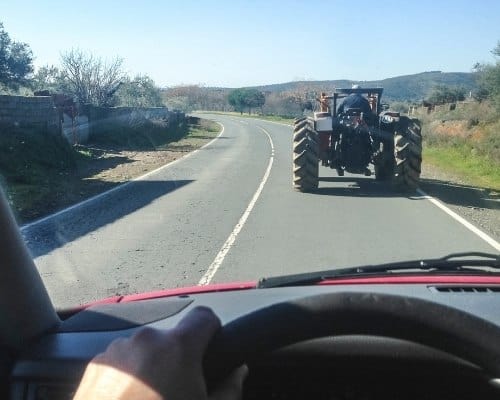
Along with that, signs and regulations are an issue too.
In 1999, Ohio State changed the speed classification for the SVM emblem (slow vehicle moving sign) from 25 to 35 mph (40 to 56 km/h). They did this to keep faster tractors covered under the law. In October 2007, Ohio state permits any unit of farm machinery that its manufacturer designs to operate at a speed greater than 25 mph (40 km/h).
They can do so as long as the unit displays both an SMV emblem and the Speed Identification Symbol (ASAE Standard 584.1). The vehicle does not exceed this documented speed.
New York State Vehicle and Traffic Low also raised the speed of these slow-moving vehicles from 25 to 39 mph with the need to introduce the SMV sign that is currently required only for equipment machinery traveling no more than 25 mph.
Today, in reality, there are even faster tractors where generally the maximum speed of most models is 65 km/h (40 mph).
What is the fastest tractor in the world?
There is always something special about watching a car go fast. But today we also love to see big machines such as tractors going fast too. It seems like something wild and not allowed as these vehicles aren’t built for speed. They are used for farm work and make farmers work easier on the field.
JCB broke that image when they built some of the fastest tractors today, Fastrac One and Fastrac Two, which are based on the commercially available JCB 8000-series. Fastrac tractor is sold in North America and is the world’s fastest production tractor, with a top speed of 43 mph (69 km/h).
In June 2019, Fastrac Two achieved 135.91 mph and became the fastest tractor in the world with a 7.2-liter six-cylinder engine and 1,016 horsepower.
Is it legal to drive a tractor on a highway?
Rules and regulations may be different in some states, but it is generally legal to drive a tractor on a highway, especially if that is its only way to get to the field.
Several states will not allow tractors to go on highways during the night as judging the speed of other vehicles is very difficult no matter how many safety devices tractors have.
A slow-moving vehicle sign (SMV Emblem) is required in most of the states (orange triangle during the day and hollow red triangle during the night) for farm tractors with a maximum speed of 25 miles per hour (rear of the tractor).
Even if a driver’s license is not required for driving tractors in the States and some form of ID is enough, drivers must follow all traffic laws.
They should also apply safe driving practices and use marking safety devices recommended by the American Society of Agricultural Engineers, and state and local law in order to protect themself and other highway drivers.
Do farmers have to pull over to let traffic pass?
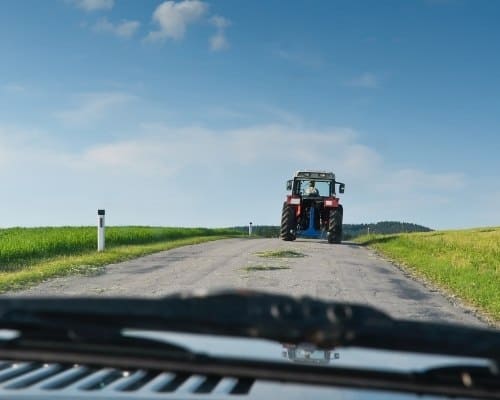
As a general rule, farmers actually have to pull over to let traffic pass in most states. Indiana code states if three or more vehicles get backed up behind the farmer in his slow-moving vehicle, it’s the farmer’s duty to pull over (when it’s safe to do so) and allow them to pass.
The Highway Code also asks slow-moving vehicles to check their mirrors often and to pull in (when safe) to allow traffic to pass.
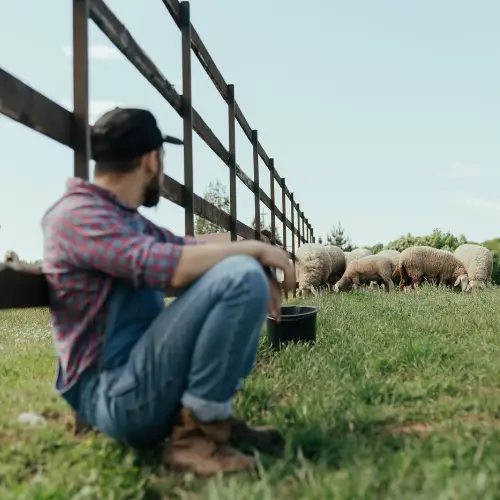
Jack is the owner, chief editor, and senior writer of this website.
Machinery, engines, and farming have always been a passion of his since he was a young boy. Growing up on a small farm in rural America, he learned the value of hard work and dedication from an early age.
After completing his degree in Engineering, he decided to follow his dream and became a farmer in 2009.
Since then, he has gained a wealth of knowledge and experience in the field. He has grown a variety of crops, tended to farm animals, and worked with all sorts of farming machinery. Continue reading…
